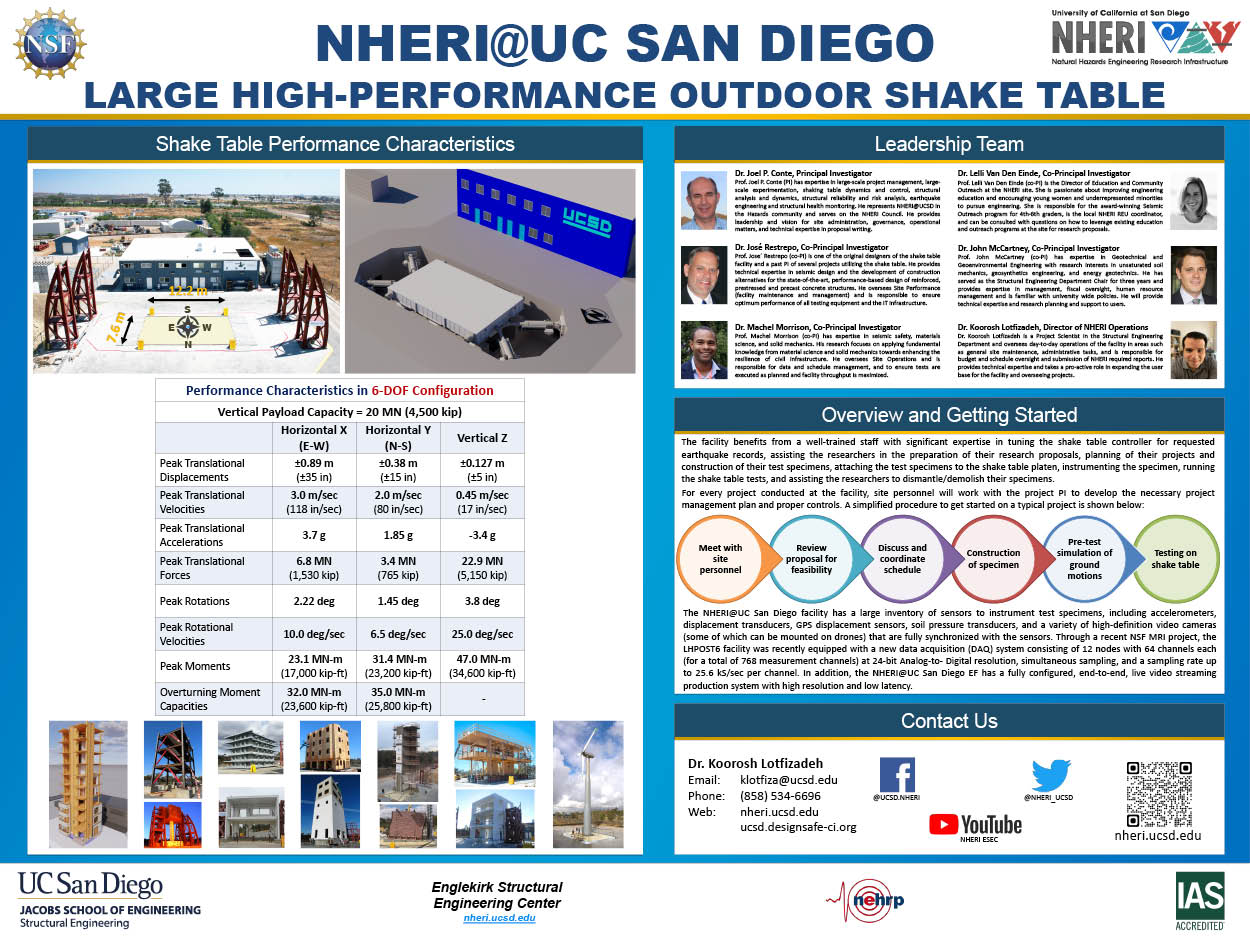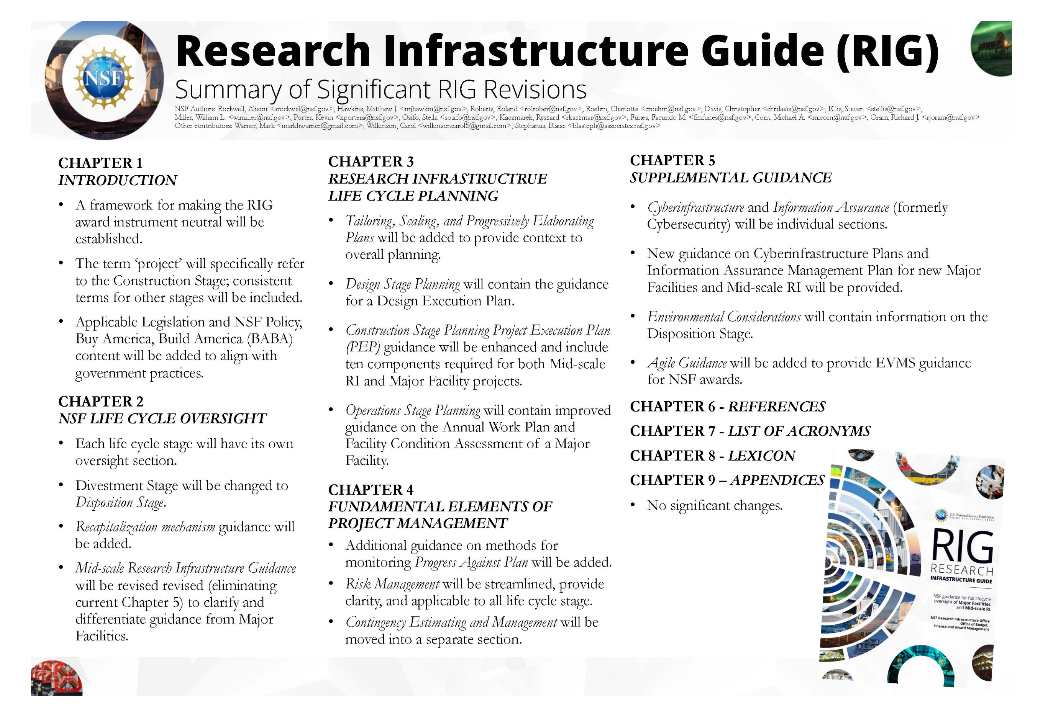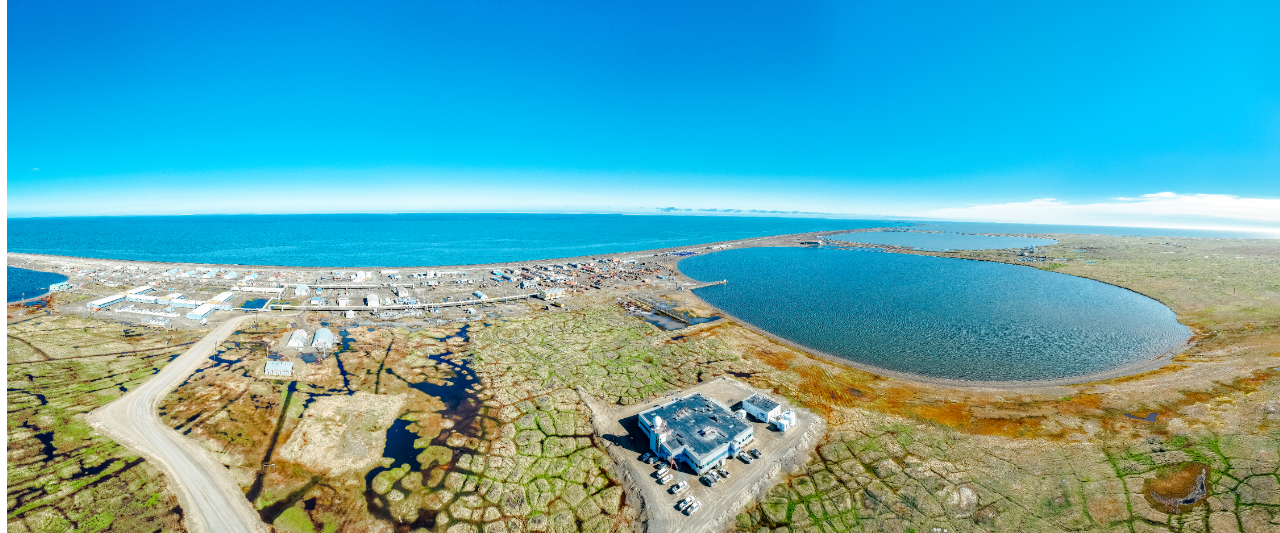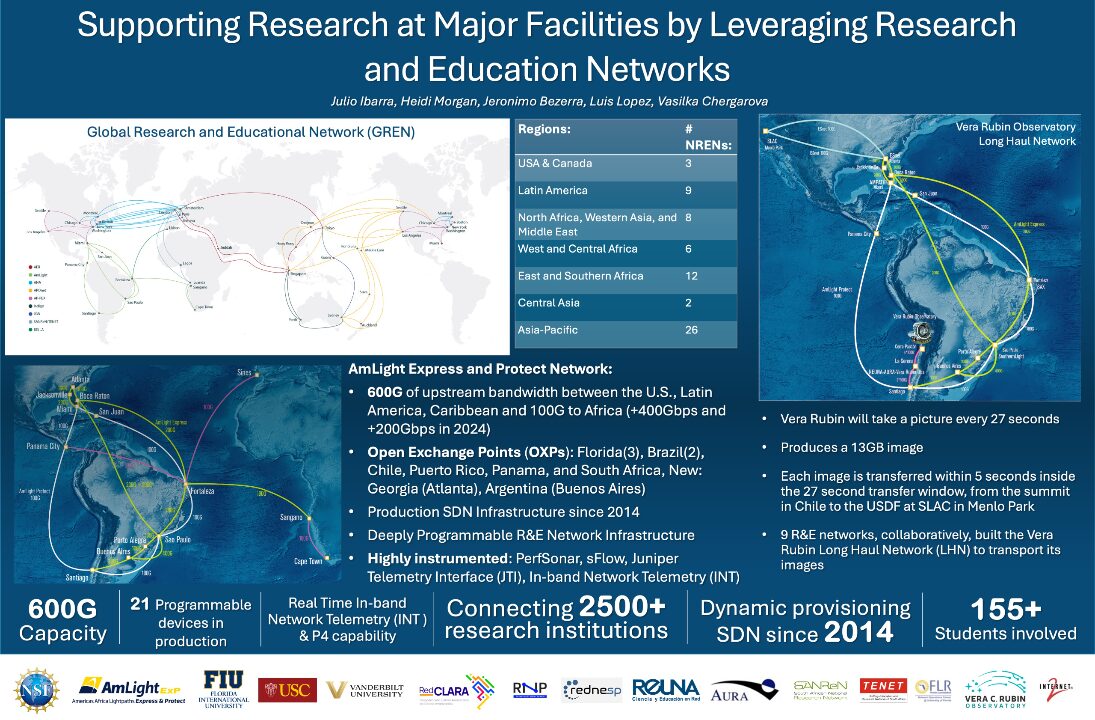NHERI@UC San Diego Large High-Performance Outdoor Shake Table (LHPOST6)
Since its commissioning in 2004, the UC San Diego Large High-Performance Outdoor Shake Table (LHPOST) has enabled the seismic testing of large structural, geostructural and soil-foundation-structural systems, with its ability to accurately reproduce far- and near-field ground motions. Thirty-four (34) landmark projects were conducted on the LHPOST as a national shared-use equipment facility part of the National Science Foundation (NSF) Network for Earthquake Engineering Simulation (NEES) and currently Natural Hazards Engineering Research Infrastructure (NHERI) programs, and an ISO/IEC Standard 17025:2005 accredited facility. The tallest structures ever tested on a shake table were conducted on the LHPOST, free from height restrictions. Experiments using the LHPOST generate essential knowledge that has greatly advanced seismic design practice and response predictive capabilities for structural, geostructural, and non-structural systems, leading to improved earthquake safety in the community overall. Indeed, the ability to test full-size structures has made it possible to physically validate the seismic performance of various systems that previously could only be studied at reduced scale or with computer models. However, the LHPOST’s limitation of 1-DOF (uni-directional) input motion prevented the investigation of important aspects of the seismic response of 3D structural systems. The LHPOST was originally conceived as a six degrees-of-freedom (6-DOF) shake table but built as a single degree-of-freedom (1-DOF) system due to budget limitations. The recently upgraded 6-DOF LHPOST (LHPOST6) is a unique, large-scale, high-performance, experimental research facility that enables research for the advancement of the science, technology, and practice in earthquake engineering. Testing of infrastructure at large scale under realistic multi-DOF seismic excitation is essential to fully understand the seismic response behavior of civil infrastructure systems. The upgraded 6-DOF capabilities will enable the development, calibration, and validation of predictive high-fidelity mathematical/computational models, and verifying effective methods for earthquake disaster mitigation and prevention. Research conducted using the LHPOST6 will improve design codes and construction standards and develop accurate decision-making tools necessary to build and maintain sustainable and disaster-resilient communities. Moreover, it will support the advancement of new and innovative materials, manufacturing methods, detailing, earthquake protective systems, seismic retrofit methods, and construction methods.





